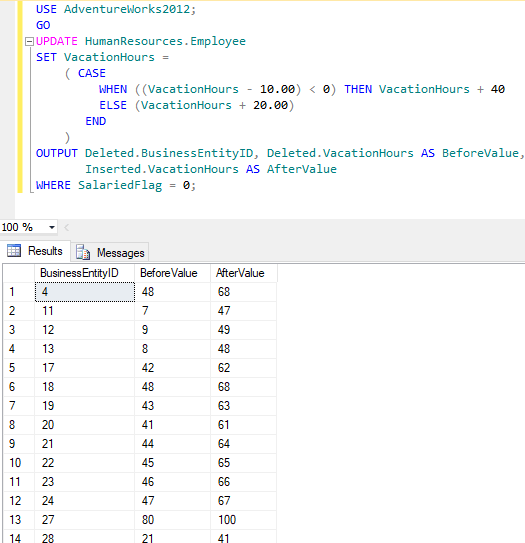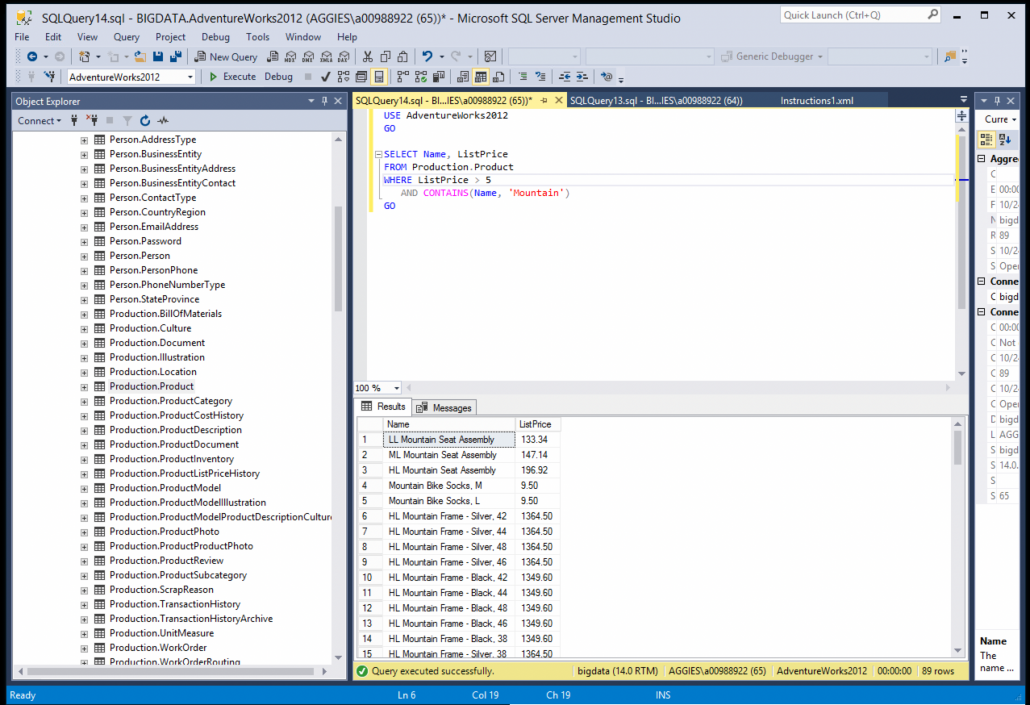


USE ADVENTUREWORKS2012 GO FULL
The key is to always have an unbroken chain of log backups since your last FULL backup to restore to, and only use ad-hoc backups, be they COPY_ONLY or not, when you really need to. It’s a bit of a cliche to say that you need to test your restore strategy before the event of a disaster, but it really is true. It doesn’t make a great deal of sense to have full backups running outside of your typical backup strategy, as it makes the restore strategy confusing. STANDBY = N 'C:\Program Files\Microsoft SQL Server\MSSQL12.MSSQLSERVER\MSSQL\Backup\AdventureWorks2012_RollbackUndo_09-02-53.bak',įROM DISK = N 'C:\Program Files\Microsoft SQL Server\MSSQL12.MSSQLSERVER\MSSQL\Backup\log.trn' WITH FILE = 1, NOUNLOAD, STATS = 10 GO
+function%3A+USE+AdventureWorks2012%3B.jpg)
RESTORE DATABASE FROM DISK = N 'C:\Program Files\Microsoft SQL Server\MSSQL12.MSSQLSERVER\MSSQL\Backup\AdventureWorks2012.bak' WITH FILE = 2, Restore AdventureWorks from a full backup taken on this server, making sure it is in full recovery mode:ĮXEC _delete_database_backuphistory = N 'AdventureWorks2012' GO I’m using a copy of AdventureWorks because it’s small and quick to backup/restore, and because it s easy to clear the backup history to make the example below easy to follow. You need to have to restore a copy of the database you recently backed up on the server. Additionally, you can restore any logs taken against the database to the COPY_ONLY version to roll it forward from a restore.Īs an example, I’m going to restore a database and make some changes to it, taking a COPY_ONLY backup, making some more changes to the database, and then dropping and restoring both the original backup and the COPY_ONLY backup and restoring the log to it. It’s important to note here that a full backup that is not COPY_ONLY will not break the log chain you can take a full backup and it will not affect the log chain at all, it will only break the differential chain. The same here can also be said for log COPY_ONLY backups it’s an ad-hoc backup that does not alter the transaction log at all there’s no clearing down of the log. The COPY_ONLY backup is not part of the restore log: so when restoring from a full backup you can ignore it. COPY_ONLY was introduced in SQL Server 2005, and allows you to take ad-hoc backups of either the log or a full backup without breaking the backup chain for differential backups. Recently I have been looking at the COPY_ONLY feature for taking backups of a database.


 0 kommentar(er)
0 kommentar(er)
